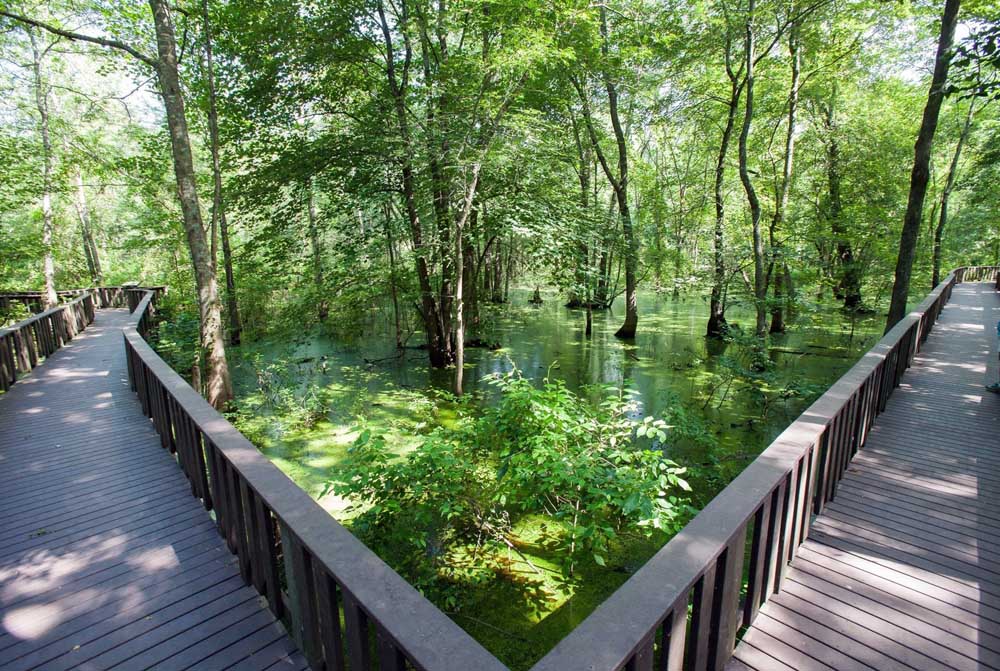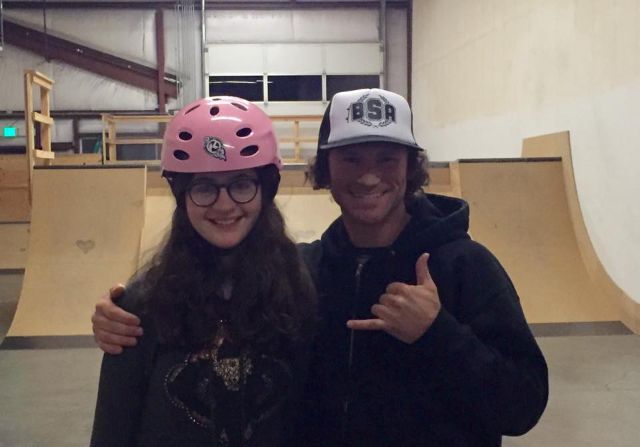A ‘Gone Girl’-inspired tour through southeast Missouri
Published 12:00 am Sunday, October 5, 2014

- The Mingo Wildlife Refuge in Puxico, Mo., is 7,730 acres of swamp, riparian areas and Ozark Plateau uplands known as the Mingo Wilderness Area, where visitors can hike the popular boardwalk through the swamp. (Brian Sirimaturos/St. Louis Post-Dispatch/MCT)
If you’ve seen the “Gone Girl” movie trailers, you’ve already glimpsed some sights around Cape Girardeau, Missouri. A recent one has a great shot of the Mississippi River bridge. The first-released trailers closed with a shot of the river. Then there are the houses, the courthouse gazebo and the “Bar,” which was recently purchased and will soon be opened as, you guessed it, a bar.
“Gone Girl,” the film adaptation of the best-selling Gillian Flynn thriller, is one of the most eagerly anticipated films of the year. It opened in theaters Friday.
Trending
And the residents of Cape are anticipating it as much as anybody. “We are so excited to see Cape Girardeau on the big screen in October! The newest trailer has so much Cape Girardeau in it, the entire community is buzzing about it,” says Stacy Dohogne Lane, director of public relations for the Cape Girardeau Convention and Visitors Bureau.
The city, which plays the role of the fictional North Carthage, Missouri, from the book, will celebrate the movie premiere in a number of ways, which will be revealed later as 20th Century Fox green-lights them. But for now, you can take a driving tour of the sites. Go to visitcape.com/gonegirl to find a downloadable map of filming sites as well as favorite restaurants of the cast and crew.
But a trip to Cape shouldn’t begin and end in Cape. Southeast Missouri has many other interesting sites to see. Don’t miss these unique destinations, most no more than an hour’s drive from Cape.
Lambert’s cafe in Sikeston
You’ve probably seen the sign for the original Lambert’s: Home of the Throwed Rolls. And yes, they really do throw rolls there. Somehow, they seem to know what kind of throw to toss, so there aren’t many rolls that wind up on the floor. The athletic-looking guy in the back? He gets a long, fast throw that soars over the heads of other diners. The older woman in the front gets a gentle toss. The toddler, a simple handoff.
The throwed rolls are only half the appeal. The other half are the pass-arounds. Macaroni and tomatoes, fried okra, sorghum, fried potatoes (pronounced FRAHD TAY-ters by the servers). The regular meals are generous, delicious and I’m sure full of fattening things I don’t want to know about.
Trending
Earl and Agnes Lambert opened the first Lambert’s in 1942. The business grew over the years, with the restaurant outgrowing its first two locations as word of mouth spread. Today, Lambert’s has restaurants in Ozark, Missouri, and Foley, Alabama, and is still family-owned. Prices are quite reasonable (a fried chicken meal with all the pass-arounds and two sides is $12.99), but keep in mind, Lambert’s does not take credit cards.
More info: 2305 East Malone Avenue, Sikeston. 1-573-471-4261; throwedrolls.com
Mingo wildlife refuge in Puxico
While I was growing up, my grandparents lived in Puxico, so I vividly remember visiting Mingo, particularly a time I saw two beavers working feverishly to build a dam, oblivious to the tourists around them.
In 1976, through the Wilderness Act of 1964, Congress designated 7,730 acres of swamp, riparian areas and Ozark Plateau uplands as the Mingo Wilderness Area. Today, it’s a great place to spend time in nature with the family. Other animals that frequent the area are river otter, bald eagles, waterfowl, swamp rabbits, wood ducks, migrating monarch butterflies and alligator gar. On our recent visit, on a hot and steamy summer day, we hiked a couple of short trails, including the popular boardwalk through the swamp. All we saw were some ducks, a blue heron and a crawfish.
Sure, I was disappointed that I didn’t see the beavers, but it’s hard not to be wowed by the majestic bald cypress rising from the swampland. Visitors can hunt and fish (with license) as well as kayak through the waterways or take a horseback ride. Most people hike the paths or boardwalks or take one of three auto tour routes.
More info: 24279 State Highway 51, Puxico. 1-573-222-3589; fws.gov/refuge/mingo
The Hunter-Dawson House in New Madrid
If you love touring historic homes, the Hunter-Dawson house, a combination of Georgian, Greek Revival and Italianate architecture, should be on your list of places to stop. Sitting regally on several tree-lined acres, the mansion harkens to New Madrid’s days as a trading stop along the Mississippi River. And unlike at many other historic homes, you can actually step inside the rooms and closely examine all the artifacts.
William Hunter died just before his southern mansion was complete in 1860. His wife, Amanda, and their children moved into the home shortly after.
The Hunters owned as many as 36 slaves, some of whom may have helped build the house along with craftsmen in the area. Today, the home is filled with many original pieces bought by Amanda herself, much of them from Mitchell and Rammelsberg Furniture of St. Louis. The home has 15 rooms and nine fireplaces. From the painted canvas floor cloth to the original pine work, the house is as authentic as possible to the period. You can even see the date 1873 scratched in the kitchen window, presumably from when daughter Ella was engaged.
More info: 312 Dawson Road, New Madrid. 1-573-748-5340; mostateparks.com/park/hunter-dawson-state-historic-site. Admission: $5.
Bollinger County Museum of Natural History in Marble Hill
As we were walking into the museum, a girl of about 10 was walking out. “How was it?” We asked. “Really, really cool,” she replied.
Housed inside an old college building, the museum is more impressive than you might expect, tucked away in the back roads of southeast Missouri.
The museum hosts a number of interesting exhibits: a natural history room, a Civil War room, a geology room, a Lego room and more. But the real draw here are the dinosaurs. The first floor tells the story about “Missouri’s Dinosaur,” a Hypsibema missouriensis, a variety of dinosaur called a hadrosaur or “duck billed” dinosaur. The dinosaur was discovered in Bollinger County in 1942; in 2004 it became Missouri’s official dinosaur. A group of schoolchildren later named it “Dyna MO.”
The museum houses dinosaur fossils and artifacts from around the world as well as a fossil preparation lab.
Upstairs, you’ll see replica skeletons and life-size models of a variety of dinosaurs: from T-Rex to a Bambiraptor. One room even has a mini dino dig and a variety of toys, puzzles and books on dinosaurs.
More info: 207 Mayfield Drive, Marble Hill, 1-573-238-1174; bcmnh.org; Admission: Adults $5; 17 and younger $2.
Bollinger Mill State Historic site
The four-story mill building dates to 1867. Today, you’ll find a museum inside it (admission is free) with various implements, from a grain elevator to a roller mill. Visitors can watch corn ground into corn meal or take a guided tour ($4) of the entire mill.
Holly Mitchell, an interpretive resource technician, showed me around the museum, pointing out historic graffiti from mill workers. In one instance, a note was dated 1935, and recently the man who wrote it returned to see it again. “That was really neat to see,” she said.
Back in the day, the mill operated off power from the dam at picturesque Whitewater River. Crossing it is the 140-foot Burfordville Covered Bridge, one of a handful left in Missouri. Pack a picnic lunch and take a walk around the property, crossing the bridge to the other side of the river. You will feel instantly transported to another time. And maybe I’m wrong, but I swear I could still smell the horses that used to traverse it.







